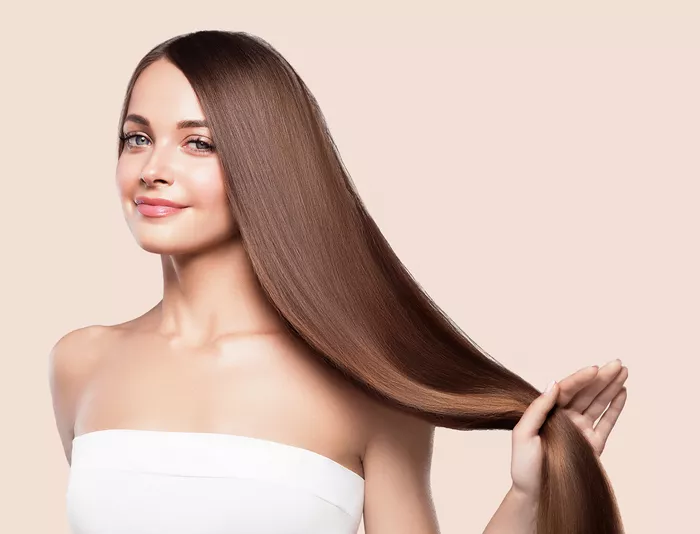Hair is an essential aspect of personal style and identity. It not only reflects our personality but also plays a crucial role in how we perceive ourselves and how others see us. Among the many questions people ask about hair is whether long hair can make one appear older. This article explores the myths and realities surrounding long hair and its impact on perceived age, along with tips for choosing the right hairstyle at any age.
Understanding Hair and Age Perception
The Psychology of Hair Length
Hair length has long been associated with various age-related stereotypes. For instance:
Youthfulness: Long hair is often associated with youth, beauty, and vibrancy. Many cultures celebrate long hair as a symbol of femininity and allure.
Maturity: Conversely, shorter hairstyles are frequently linked to maturity and sophistication. Women in their 30s and older often opt for shorter cuts, which can evoke a sense of professionalism and authority.
Cultural Influences on Hair Length
Different cultures have varying perceptions of hair length and age. In some cultures, long hair is a sign of vitality and femininity, while in others, it may symbolize rebellion or non-conformity. It’s essential to consider these cultural perspectives when discussing the relationship between hair length and age.
Factors That Influence Age Perception in Hairstyles
Face Shape and Features
The way hair frames the face can significantly impact how old one appears. Long hair can elongate the face, which may make some people look older, while others may benefit from the youthful softness that longer locks can provide.
Round Faces: Long, straight hair can emphasize the roundness of the face, potentially making it look fuller. Adding layers or waves can create balance and soften the overall look.
Oval Faces: Those with oval faces can often pull off various hairstyles, including long hair, without appearing older.
See Also: Does Your Hair Grow Quicker if You Cut It? Uncover the truth
Hair Texture and Thickness
The texture and thickness of hair also influence how age is perceived.
Fine Hair: Long, fine hair may appear limp and lifeless, contributing to an older appearance. Adding volume through layers or styling can create a more youthful look.
Thick Hair: Thick, healthy long hair can convey vibrancy and youth, regardless of age. Proper maintenance is crucial to avoid an unkempt appearance.
Hair Color and Maintenance
The color of your hair can play a significant role in how old you appear.
Grays and Whites: Natural grays and whites can add years to your appearance, especially if the hair is long and unkempt. Regular maintenance and a fresh cut can help manage this effect.
Bold Colors: Bright or unconventional colors can add a youthful flair to long hair, making the wearer appear more vibrant and playful.
Facial Aging
As people age, their facial features change. Hair can either complement or accentuate these changes.
Skin Elasticity: Loss of skin elasticity can create sagging skin, making longer hair appear heavier and potentially older.
Volume: Adding volume at the roots can counteract the effects of aging skin, giving a lifted appearance.
Expert Opinions on Hair Length and Age
Hair Stylists’ Perspectives
Many hairstylists argue that it’s not the length of the hair that determines age perception but rather how the hair is styled.
Layers and Texture: Stylists recommend incorporating layers to add movement and volume, which can create a more youthful appearance.
Face-Framing Cuts: Face-framing layers or bangs can soften sharp features and distract from age-related changes.
Dermatologists’ Insights
Dermatologists emphasize the importance of healthy hair and scalp care.
Healthy Scalp: A healthy scalp promotes healthy hair growth. Hair that looks vibrant and well-cared-for is less likely to contribute to an older appearance.
Sun Protection: Protecting hair from sun damage can prevent premature aging, keeping hair looking youthful.
Styling Tips for Long Hair at Any Age
If you have long hair or are considering growing it out, here are some tips to ensure it enhances your appearance:
Regular Trims
Keeping your hair well-trimmed is essential. Regular trims can remove split ends and prevent the hair from looking unhealthy.
Incorporate Layers
Adding layers can create movement and dimension, making long hair look lighter and more youthful.
Experiment with Bangs
Bangs can be an excellent way to change your look and soften facial features. Side-swept bangs are particularly flattering for various face shapes.
Color Considerations
Consider shades that complement your skin tone. Highlights or lowlights can add depth and dimension to your hair.
Use the Right Products
Utilize volumizing shampoos and conditioners to add fullness. Hair serums can also help maintain shine and health.
Protect from Heat Damage
If you style your hair with heat, always use a heat protectant to avoid damage, which can lead to an older appearance.
Conclusion
The relationship between long hair and age perception is complex and influenced by numerous factors, including face shape, hair texture, color, and overall hair health. While long hair does not inherently make you look older, certain styling choices and maintenance practices can affect how age is perceived.
Ultimately, the best hairstyle is one that makes you feel confident and comfortable. Embrace your hair length, and choose styles that enhance your natural beauty and reflect your personality. Whether you choose to wear your hair long or short, remember that confidence is the most attractive quality of all.
You Might Be Interested In
- Does Cutting Hair Short Make It Grow Thicker? Learn the truth
- Does Hair Growth Stop at a Certain Age? Debunking Myths
- Sleeping with Hair Up: Pros & Cons of Hair Care During Sleep


